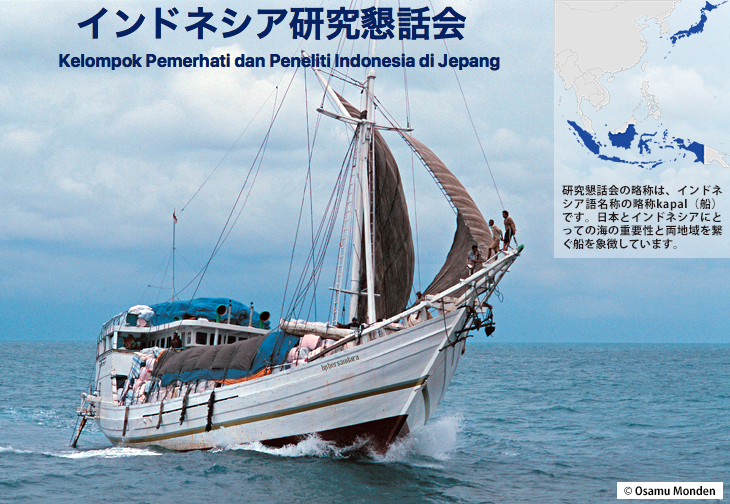Presentation Contents
For the 5th KAPAL Conference, during the “Lightning Talk” session, I gave a brief presentation on some aspects of my doctoral research. Mostly, I used a selection of data from the fieldwork I conducted in the last two years. My research focuses on the Kecamatan Lasem of Kabupaten Rembang, Central Java, particularly their cultural heritage. The title of my presentation is “Uses of Heritage Objects and Artifacts by Local Community Members: Case Study of Lasem, Indonesia.” I explained how Lasem, which is renowned for its multiculturalism, has abundant heritage resources, and I specifically highlighted the old houses built around the 18th, 19th, or 20th centuries. These houses are heavily influenced by Chinese architectural style and are unique to Lasem. Regarding these old houses, I described further how local community members are protecting the cultural heritage by actively using them in their daily lives.
Submission Process
In the beginning, I learned about the KAPAL Conference from my senior and was suggested to apply. I decided to try it out since I wanted to try a new experience, and I was hoping that I would get valuable feedback from other scholars at the conference. Fortunately, because the Lightning Talk does not require a specific topic, I could write about my ongoing research and the information I have gathered thus far from my fieldwork. Coincidentally, at the time that I wrote my application for Lightning Talk, I was actually in the middle of my fieldwork in Lasem. I was delighted to be notified that my application had been accepted, and as instructed, I created slides with images and texts to explain my research. Sometime later, I received feedback regarding my slides to be improved, including adding more details and context about my topic. Before the conference day, I attended an online practice session on Zoom with other Lightning Talk speakers. Honestly, I was slightly nervous when I discovered that most of the other presenters spoke in Japanese. At this moment, my Japanese skills are still very limited and not fluent. However, I could still present my research in English, as planned.
The Day of Presentation
On the day, I was even more nervous; the actual day was nothing like the practice session because I could see so many people in the room listening to my presentation. However, it was worth the experience. I received a question regarding the ownership of the old houses (the cultural heritage) in Lasem, specifically about the families that share the ownership, who usually pass down their properties to the next generation. The question made me think of another perspective or angle of my research that I had never really thought about before. The presentation lasted for a very short time; I talked for about five minutes and finished with a short Q&A session. It was still a truly valuable experience for me to have the opportunity to speak in front of fellow scholars and researchers whose expertise and studies are also about Indonesia. I also learned from other presenters at the Lightning Talk and general session as well. I was amazed that, even though I am an Indonesian who was born and raised in Indonesia, I discovered that many aspects and elements of Indonesia can be researched and studied deeper. Things that I thought of as ordinary or mundane might be interesting for other researchers who came from abroad.
Conclusion
Overall, this was a very beneficial opportunity for me, and I highly recommend other young researchers in the field to also apply for the next Lightning Talk session. Whether you are from Indonesia, Japan, or any other country, if your study is about Indonesia, this is a valuable chance to improve your research!
I would also like to express my gratitude to Prof. Shintaro Fukutake, who organized this Lightning Talk session and gave me guidance throughout the whole process.
Virliany Rizqia Putri (Kanazawa University)
【日本語訳】
発表内容
KAPAL第5回研究大会の「ライトニング・トーク」セッションで、私は博士課程における研究の一部ついて簡単なプレゼンテーションを行った。主に、過去2年間に行ったフィールドワークのデータの一部を使った。私の研究は、中部ジャワ州ルンバン県ラセム郡における、特に文化遺産に焦点を当てている。私のプレゼンテーションのタイトルは、「地域住民による文化遺産の利用―インドネシア・ラセムの事例研究」である。文化的多様性で有名なラセムには、文化遺産が豊富にあることを説明し、特に18世紀~20世紀頃に建てられた古い家屋に焦点を当てた。これらの家屋は中国の建築様式に大きな影響を受けており、ラセム固有のものである。さらに、これらの古い建築物に関して、地域の人々が日常生活の中で積極的に活用しながら文化遺産を守っている様子を紹介した。
提出プロセス
当初、先輩からKAPALの大会の存在を知り、応募を勧められた。新しい体験をしてみたかったのに加え、大会で他の研究者から貴重なフィードバックを得られることを期待していたので、挑戦してみることにした。幸いなことに、ライトニング・トークでは特定のトピックが要求されないため、私は現在進行中の研究や、フィールドワークでこれまでに収集した情報について書くことができた。ライトニング・トークへの応募書類を書いたのは、たまたま私がラセムでフィールドワークをしていた最中だった。申請が受理されたとの知らせに喜び、指示されたとおりに、自分の研究を説明するための画像とテキストを使ったスライドを作成した。しばらくして、私のトピックに関する細部やその背景について加えるなど、スライドの改善点に関するフィードバックを受け取った。大会に先立って、私はZoomで他のライトニング・トークの発表者と事前練習のオンライン・セッションに参加した。正直なところ、他の発表者のほとんどが日本語で話していることを知り、少し緊張した。現時点で私の日本語能力は限られており、流暢ではなかったからだ。しかし、予定通り、自分の研究を英語で発表することができた。
発表当日
当日はさらに緊張した。練習の時とは異なり、たくさんの人が私の発表を聞いているのが見えたからだ。しかし、発表した価値はあった。ラセムの古い建築物(文化遺産)の、特に所有権を共有する家族について質問を受けた。その質問によって、私は自分の研究の別の視点や角度について考えさせられた。プレゼンテーションの時間はとても短く、5分ほど発表した後に、短い質疑応答で終わった。それでも、同じインドネシアを専門とする学者や研究者の前で話す機会を持てたことは、私にとって本当に貴重な経験だった。また、ライトニング・トークや一般セッションでも、他の発表者から学ぶことが多かった。私はインドネシアで生まれ育ったインドネシア人だが、インドネシアの多くの側面や要素が、より深く研究され、研究され得ることを発見し驚いた。私がありふれたことだと思っていたことも、外国から来た研究者にとっては興味深いことなのかもしれない。
結論
全体として、今回のライトニング・トークは私にとって非常に有益な機会であり、この分野の他の若手研究者にも次回のライトニング・トークに応募することを強く勧めたい。インドネシア出身であれ、日本出身であれ、あるいは他の国の出身であれ、インドネシアに関する研究であれば、この場は研究を向上させる貴重なチャンスとなるでしょう!
このライトニング・トーク・セッションを企画し、全体を通して指導してくださった福武慎太郎先生に感謝の意を表します。
※上記の日本語訳は、一般読者の参考としてKAPAL情報担当が翻訳したものです。
